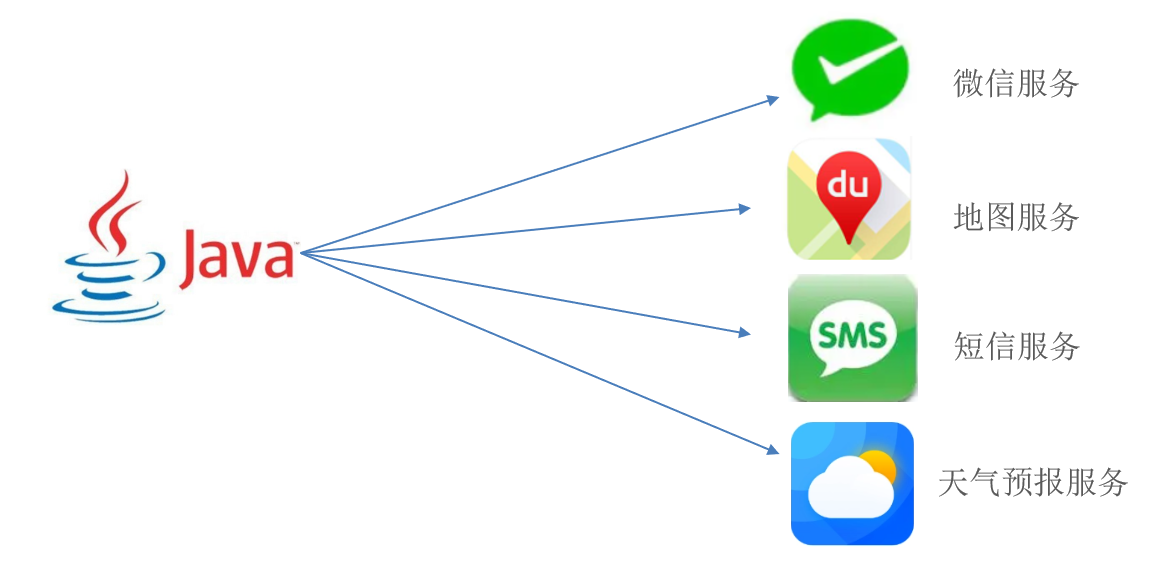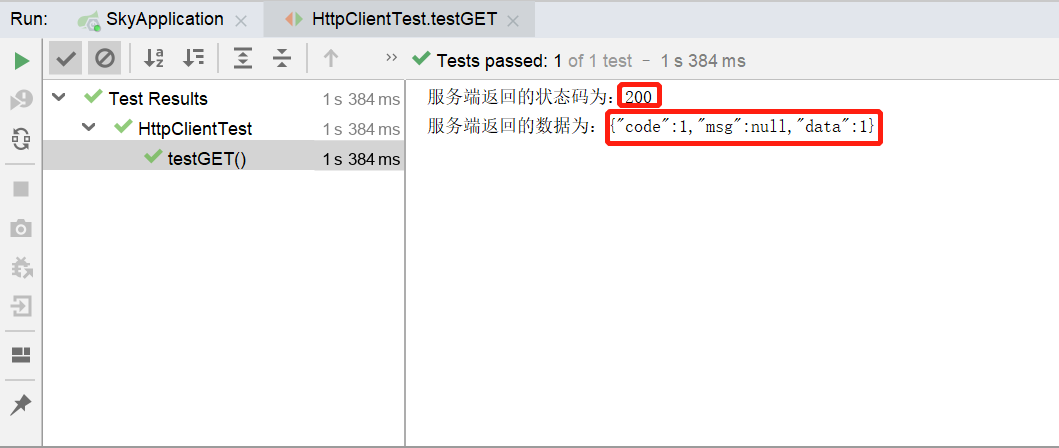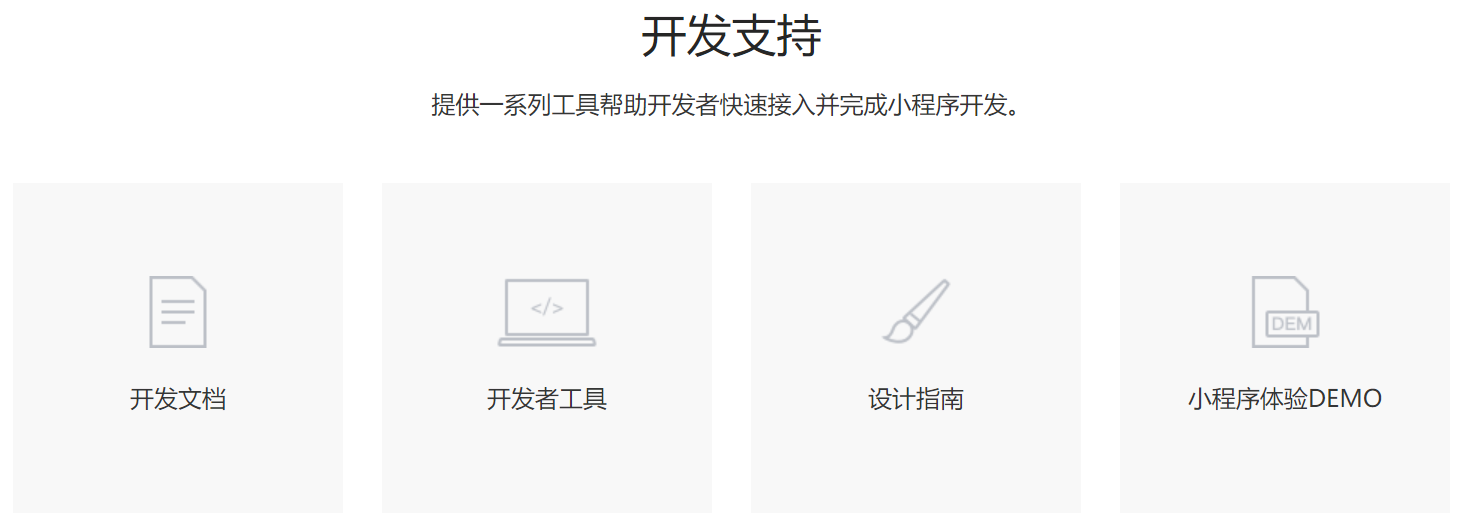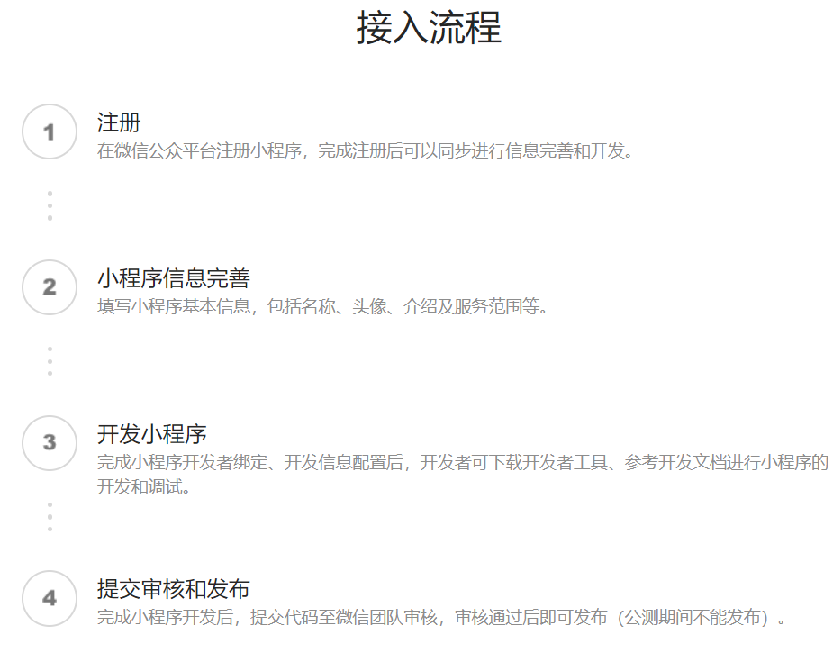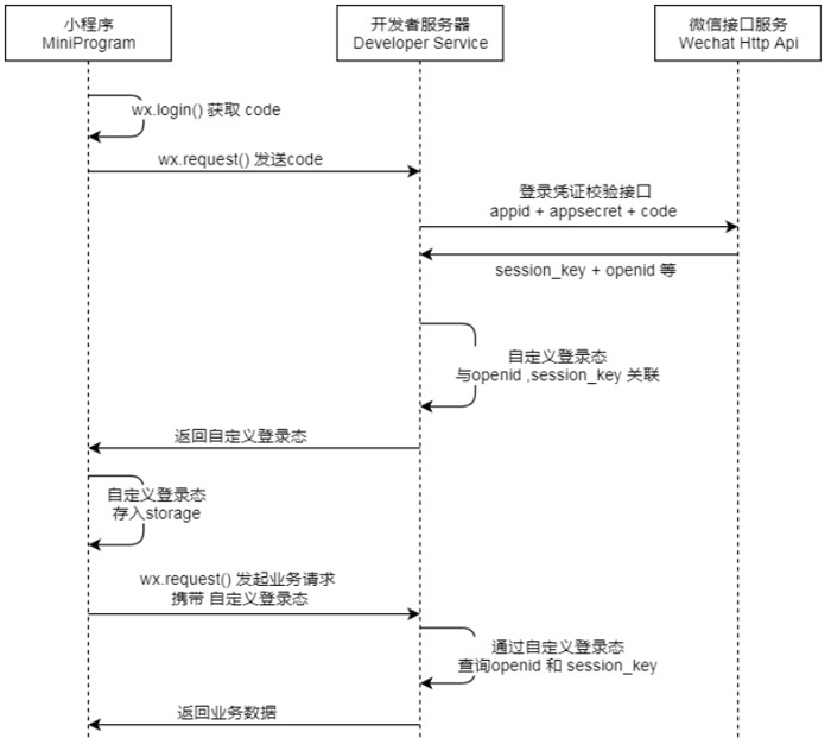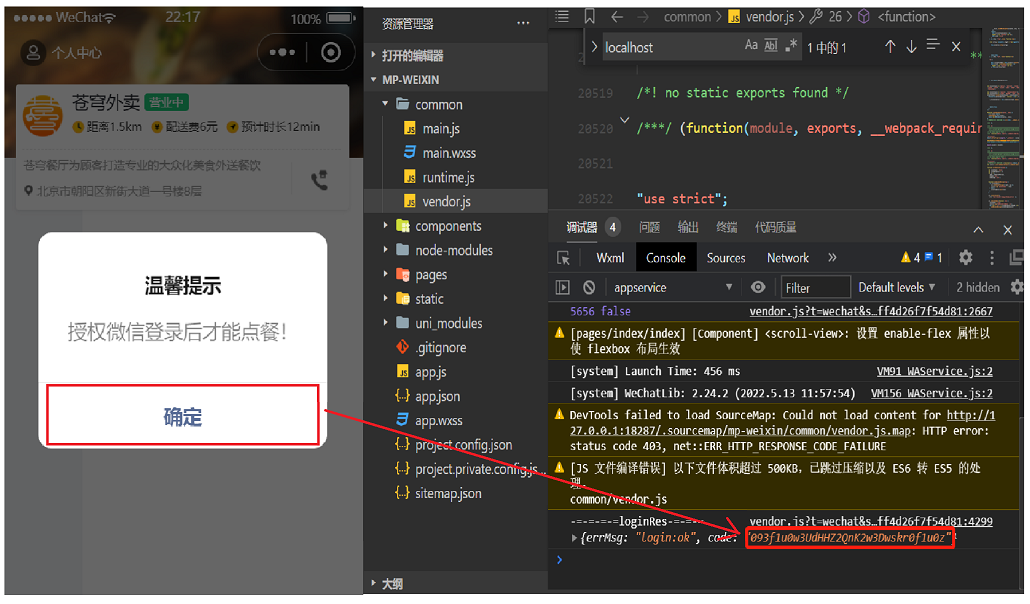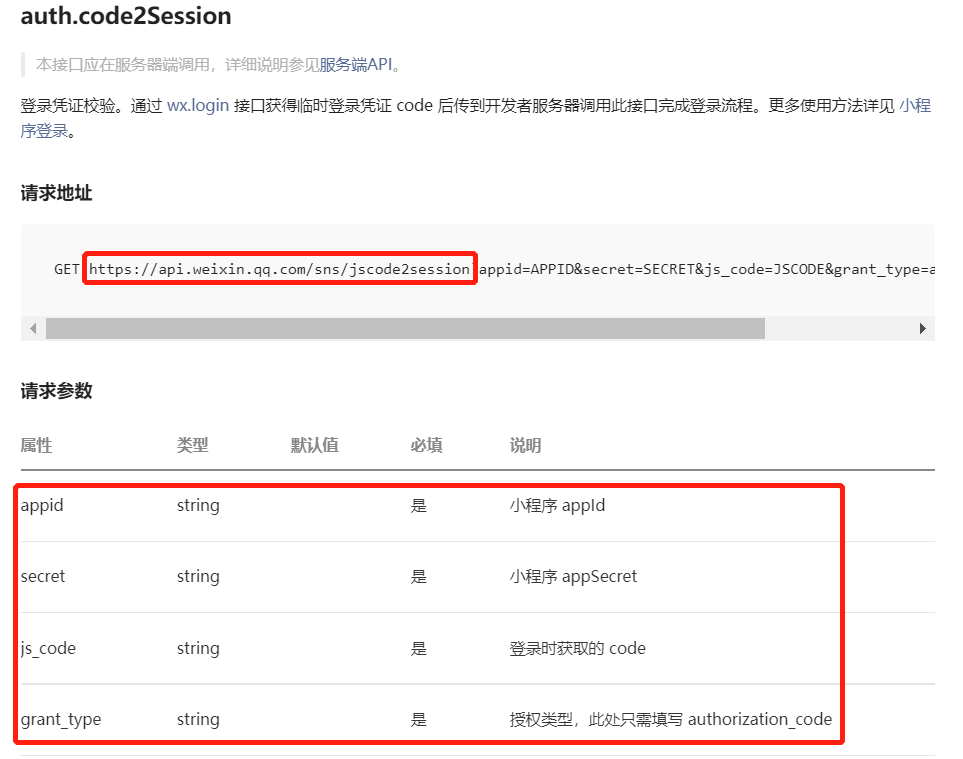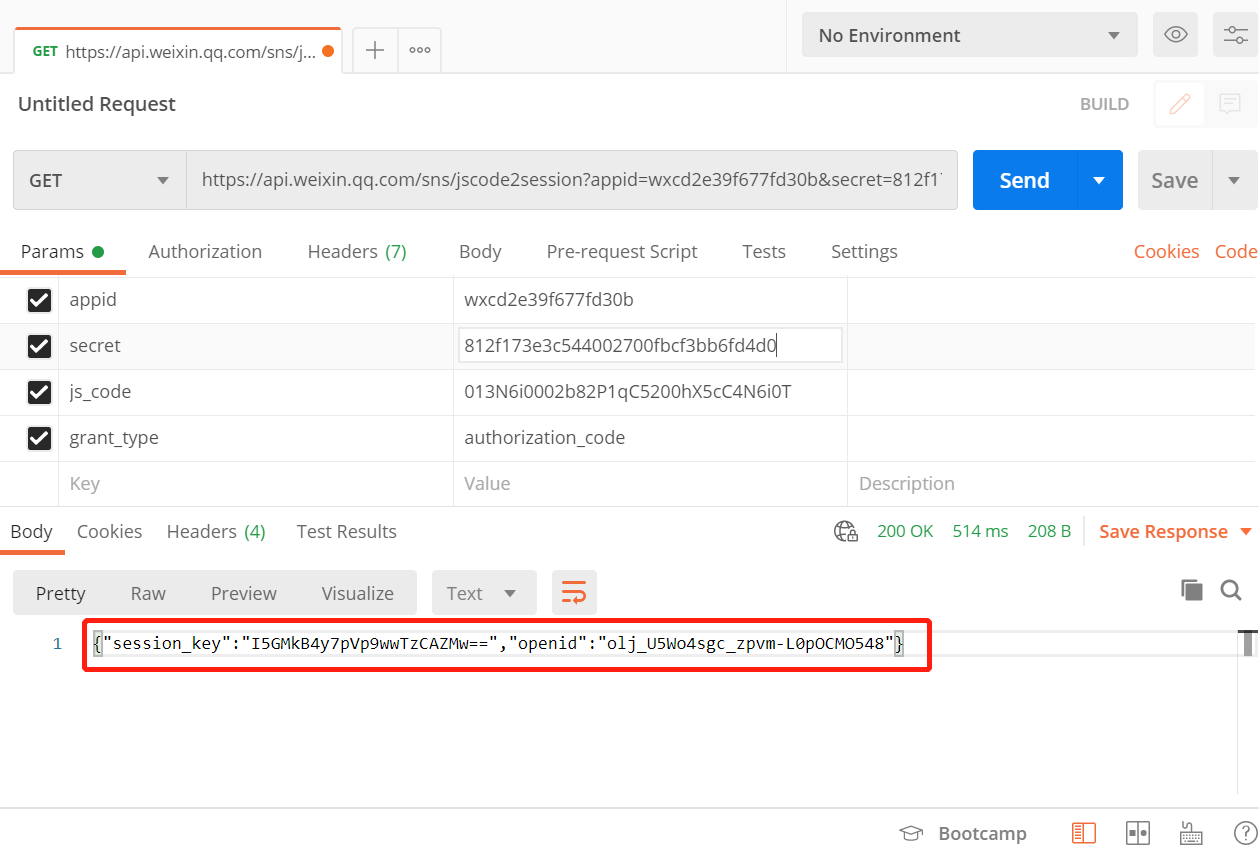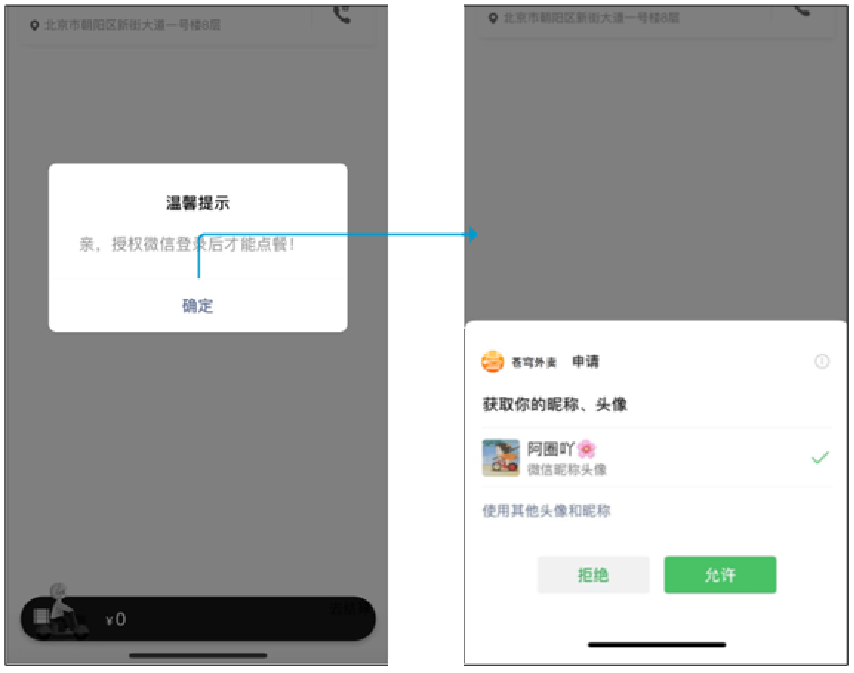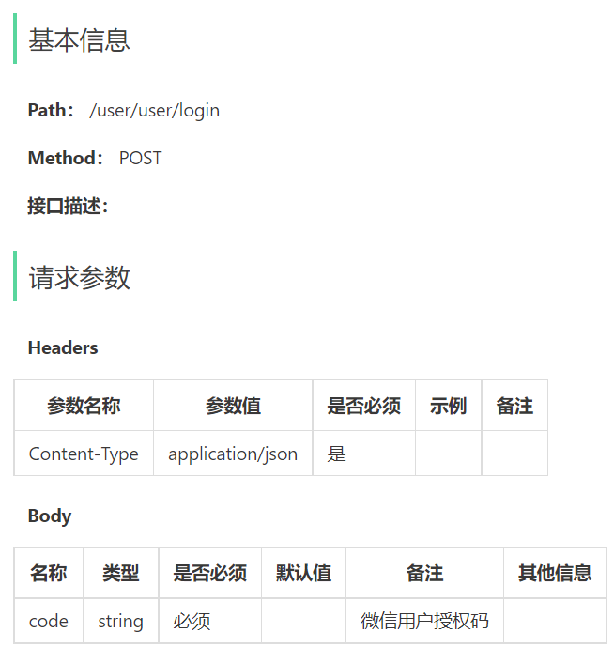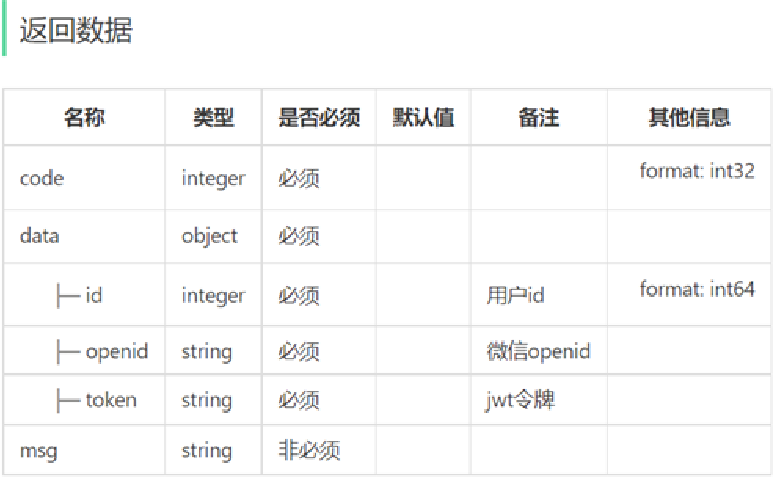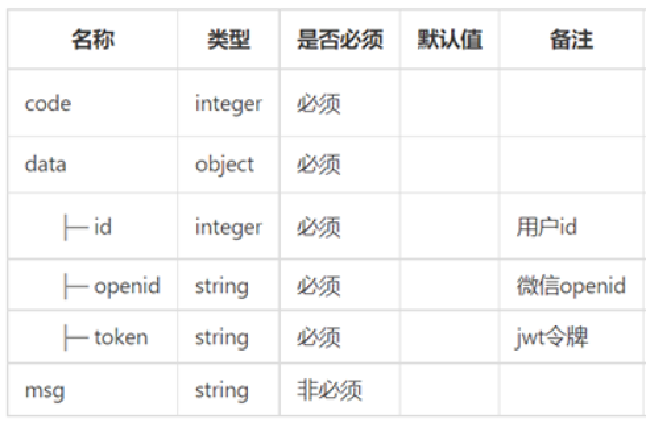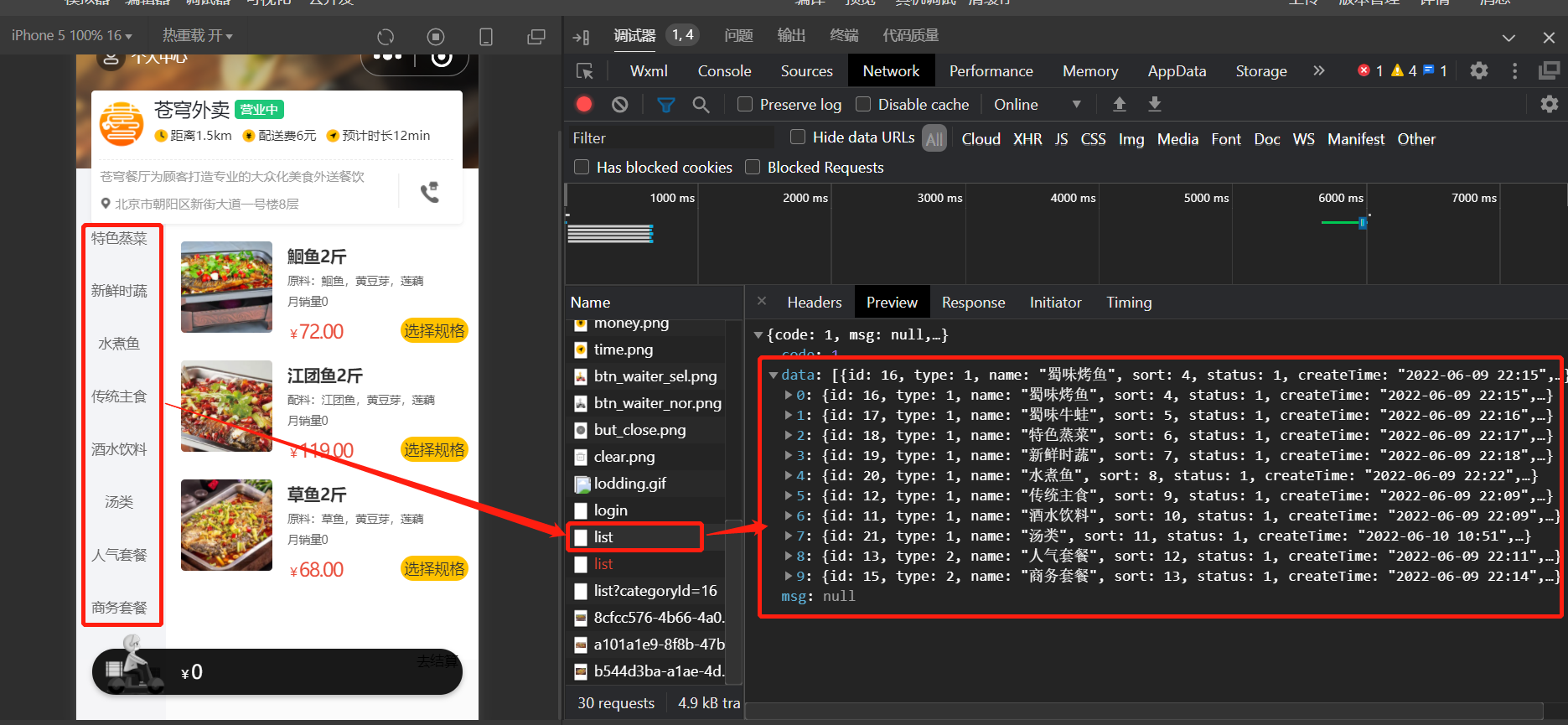苍穹外卖day06 1. HttpClient 1.1 介绍 HttpClient 是Apache Jakarta Common 下的子项目,可以用来提供高效的、最新的、功能丰富的支持 HTTP 协议的客户端编程工具包,并且它支持 HTTP 协议最新的版本和建议。
HttpClient作用:
为什么要在Java程序中发送Http请求?有哪些应用场景呢?
HttpClient应用场景:
当我们在使用扫描支付、查看地图、获取验证码、查看天气等功能时
其实,应用程序本身并未实现这些功能,都是在应用程序里访问提供这些功能的服务,访问这些服务需要发送HTTP请求,并且接收响应数据,可通过HttpClient来实现。
HttpClient的maven坐标:
1 2 3 4 5 <dependency > <groupId > org.apache.httpcomponents</groupId > <artifactId > httpclient</artifactId > <version > 4.5.13</version > </dependency >
HttpClient的核心API:
HttpClient:Http客户端对象类型,使用该类型对象可发起Http请求。
HttpClients:可认为是构建器,可创建HttpClient对象。
CloseableHttpClient:实现类,实现了HttpClient接口。
HttpGet:Get方式请求类型。
HttpPost:Post方式请求类型。
HttpClient发送请求步骤:
创建HttpClient对象
创建Http请求对象
调用HttpClient的execute方法发送请求
1.2 入门案例 对HttpClient编程工具包有了一定了解后,那么,我们使用HttpClient在Java程序当中来构造Http的请求,并且把请求发送出去,接下来,就通过入门案例分别发送GET请求 和POST请求 ,具体来学习一下它的使用方法。
1.2.1 GET方式请求 正常来说,首先,应该导入HttpClient相关的坐标,但在项目中,就算不导入,也可以使用相关的API。
因为在项目中已经引入了aliyun-sdk-oss坐标:
1 2 3 4 <dependency > <groupId > com.aliyun.oss</groupId > <artifactId > aliyun-sdk-oss</artifactId > </dependency >
上述依赖的底层已经包含了HttpClient相关依赖。
进入到sky-server模块,编写测试代码,发送GET请求。
实现步骤:
创建HttpClient对象
创建请求对象
发送请求,接受响应结果
解析结果
关闭资源
1 2 3 4 5 6 7 8 9 10 11 12 13 14 15 16 17 18 19 20 21 22 23 24 25 26 27 28 29 30 31 32 33 34 35 36 37 38 39 40 41 package com.sky.test;import org.apache.http.HttpEntity;import org.apache.http.client.methods.CloseableHttpResponse;import org.apache.http.client.methods.HttpGet;import org.apache.http.impl.client.CloseableHttpClient;import org.apache.http.impl.client.HttpClients;import org.apache.http.util.EntityUtils;import org.junit.jupiter.api.Test;import org.springframework.boot.test.context.SpringBootTest;@SpringBootTest public class HttpClientTest { @Test public void testGET () throws Exception{ CloseableHttpClient httpClient = HttpClients.createDefault(); HttpGet httpGet = new HttpGet ("http://localhost:8080/user/shop/status" ); CloseableHttpResponse response = httpClient.execute(httpGet); int statusCode = response.getStatusLine().getStatusCode(); System.out.println("服务端返回的状态码为:" + statusCode); HttpEntity entity = response.getEntity(); String body = EntityUtils.toString(entity); System.out.println("服务端返回的数据为:" + body); response.close(); httpClient.close(); } }
在访问http://localhost:8080/user/shop/status请求时,需要提前启动项目。
测试结果:
1.2.2 POST方式请求 在HttpClientTest中添加POST方式请求方法,相比GET请求来说,POST请求若携带参数需要封装请求体对象,并将该对象设置在请求对象中。
实现步骤:
创建HttpClient对象
创建请求对象
发送请求,接收响应结果
解析响应结果
关闭资源
1 2 3 4 5 6 7 8 9 10 11 12 13 14 15 16 17 18 19 20 21 22 23 24 25 26 27 28 29 30 31 32 33 34 35 36 37 @Test public void testPOST () throws Exception{ CloseableHttpClient httpClient = HttpClients.createDefault(); HttpPost httpPost = new HttpPost ("http://localhost:8080/admin/employee/login" ); JSONObject jsonObject = new JSONObject (); jsonObject.put("username" ,"admin" ); jsonObject.put("password" ,"123456" ); StringEntity entity = new StringEntity (jsonObject.toString()); entity.setContentEncoding("utf-8" ); entity.setContentType("application/json" ); httpPost.setEntity(entity); CloseableHttpResponse response = httpClient.execute(httpPost); int statusCode = response.getStatusLine().getStatusCode(); System.out.println("响应码为:" + statusCode); HttpEntity entity1 = response.getEntity(); String body = EntityUtils.toString(entity1); System.out.println("响应数据为:" + body); response.close(); httpClient.close(); }
测试结果:
2. 微信小程序开发 2.1 介绍 小程序是一种新的开放能力,开发者可以快速地开发一个小程序。可以在微信内被便捷地获取和传播,同时具有出色的使用体验。
**首先,**在进行小程序开发时,需要先去注册一个小程序,在注册的时候,它实际上又分成了不同的注册的主体。我们可以以个人的身份来注册一个小程序,当然,也可以以企业政府、媒体或者其他组织的方式来注册小程序。那么,不同的主体注册小程序,最终开放的权限也是不一样的。比如以个人身份来注册小程序,是无法开通支付权限的。若要提供支付功能,必须是企业、政府或者其它组织等。所以,不同的主体注册小程序后,可开发的功能是不一样的。
**然后,**微信小程序我们提供的一些开发的支持,实际上微信的官方是提供了一系列的工具来帮助开发者快速的接入
**最后,**开发完一个小程序要上线,也给我们提供了详细地接入流程。
2.2 准备工作 开发微信小程序之前需要做如下准备工作:
3. 微信登录 3.1 导入小程序代码 开发微信小程序,本质上是属于前端的开发,我们的重点其实还是后端代码开发。所以,小程序的代码已经提供好了,直接导入到微信开发者工具当中,直接来使用就可以了。
3.2 微信登录流程 微信登录:https://developers.weixin.qq.com/miniprogram/dev/framework/open-ability/login.html
流程图:
步骤分析:
小程序端,调用wx.login()获取code,就是授权码。
小程序端,调用wx.request()发送请求并携带code,请求开发者服务器(自己编写的后端服务)。
开发者服务端,通过HttpClient向微信接口服务发送请求,并携带appId+appsecret+code三个参数。
开发者服务端,接收微信接口服务返回的数据,session_key+opendId等。opendId是微信用户的唯一标识。
开发者服务端,自定义登录态,生成令牌(token)和openid等数据返回给小程序端,方便后绪请求身份校验。
小程序端,收到自定义登录态,存储storage。
小程序端,后绪通过wx.request()发起业务请求时,携带token。
开发者服务端,收到请求后,通过携带的token,解析当前登录用户的id。
开发者服务端,身份校验通过后,继续相关的业务逻辑处理,最终返回业务数据。
接下来,我们使用Postman进行测试。
说明:
调用 wx.login() 获取 临时登录凭证code ,并回传到开发者服务器。
调用 auth.code2Session 接口,换取 用户唯一标识 OpenID 、 用户在微信开放平台帐号下的唯一标识UnionID (若当前小程序已绑定到微信开放平台帐号) 和 会话密钥 session_key 。
之后开发者服务器可以根据用户标识来生成自定义登录态,用于后续业务逻辑中前后端交互时识别用户身份。
实现步骤:
1). 获取授权码
点击确定按钮,获取授权码,每个授权码只能使用一次,每次测试,需重新获取。
2). 明确请求接口 *
请求方式、请求路径、请求参数
3). 发送请求
获取session_key和openid
3.3 需求分析和设计 3.3.1 产品原型 用户进入到小程序的时候,微信授权登录之后才能点餐。需要获取当前微信用户的相关信息,比如昵称、头像等,这样才能够进入到小程序进行下单操作。是基于微信登录来实现小程序的登录功能,没有采用传统账户密码登录的方式。若第一次使用小程序来点餐,就是一个新用户,需要把这个新的用户保存到数据库当中完成自动注册。
登录功能原型图:
业务规则:
基于微信登录实现小程序的登录功能
如果是新用户需要自动完成注册
3.3.2 接口设计 通过微信登录的流程,如果要完成微信登录的话,最终就要获得微信用户的openid。在小程序端获取授权码后,向后端服务发送请求,并携带授权码,这样后端服务在收到授权码后,就可以去请求微信接口服务。最终,后端向小程序返回openid和token等数据。
基于上述的登录流程,就可以设计出该接口的请求参数 和返回数据 。
**说明:**请求路径/user/user/login,第一个user代表用户端,第二个user代表用户模块。
3.3.3 表设计 当用户第一次使用小程序时,会完成自动注册,把用户信息存储到user 表中。
字段名 数据类型 说明 备注
id
bigint
主键
自增
openid
varchar(45)
微信用户的唯一标识
name
varchar(32)
用户姓名
phone
varchar(11)
手机号
sex
varchar(2)
性别
id_number
varchar(18)
身份证号
avatar
varchar(500)
微信用户头像路径
create_time
datetime
注册时间
**说明:**手机号字段比较特殊,个人身份注册的小程序没有权限获取到微信用户的手机号。如果是以企业的资质
3.4 代码开发 3.4.1 定义相关配置 配置微信登录所需配置项:
application-dev.yml
application.yml
1 2 3 4 sky: wechat: appid: ${sky.wechat.appid} secret: ${sky.wechat.secret}
配置为微信用户生成jwt令牌时使用的配置项:
application.yml
1 2 3 4 5 6 7 8 9 10 11 sky: jwt: admin-secret-key: itcast admin-ttl: 7200000 admin-token-name: token user-secret-key: itheima user-ttl: 7200000 user-token-name: authentication
3.4.2 DTO设计 根据传入参数设计DTO类:
在sky-pojo模块,UserLoginDTO.java已定义
1 2 3 4 5 6 7 8 9 10 11 12 13 14 15 package com.sky.dto;import lombok.Data;import java.io.Serializable;@Data public class UserLoginDTO implements Serializable { private String code; }
3.4.3 VO设计 根据返回数据设计VO类:
在sky-pojo模块,UserLoginVO.java已定义
1 2 3 4 5 6 7 8 9 10 11 12 13 14 15 16 17 18 19 20 package com.sky.vo;import lombok.AllArgsConstructor;import lombok.Builder;import lombok.Data;import lombok.NoArgsConstructor;import java.io.Serializable;@Data @Builder @NoArgsConstructor @AllArgsConstructor public class UserLoginVO implements Serializable { private Long id; private String openid; private String token; }
3.4.4 Controller层 根据接口定义创建UserController的login方法:
1 2 3 4 5 6 7 8 9 10 11 12 13 14 15 16 17 18 19 20 21 22 23 24 25 26 27 28 29 30 31 32 33 34 35 36 37 38 39 40 41 42 43 44 45 46 47 48 49 50 51 52 53 54 55 56 57 58 package com.sky.controller.user;import com.sky.constant.JwtClaimsConstant;import com.sky.dto.UserLoginDTO;import com.sky.entity.User;import com.sky.properties.JwtProperties;import com.sky.result.Result;import com.sky.service.UserService;import com.sky.utils.JwtUtil;import com.sky.vo.UserLoginVO;import io.swagger.annotations.Api;import io.swagger.annotations.ApiOperation;import lombok.extern.slf4j.Slf4j;import org.springframework.beans.factory.annotation.Autowired;import org.springframework.web.bind.annotation.PostMapping;import org.springframework.web.bind.annotation.RequestBody;import org.springframework.web.bind.annotation.RequestMapping;import org.springframework.web.bind.annotation.RestController;import java.util.HashMap;import java.util.Map;@RestController @RequestMapping("/user/user") @Api(tags = "C端用户相关接口") @Slf4j public class UserController { @Autowired private UserService userService; @Autowired private JwtProperties jwtProperties; @PostMapping("/login") @ApiOperation("微信登录") public Result<UserLoginVO> login (@RequestBody UserLoginDTO userLoginDTO) { log.info("微信用户登录:{}" ,userLoginDTO.getCode()); User user = userService.wxLogin(userLoginDTO); Map<String, Object> claims = new HashMap <>(); claims.put(JwtClaimsConstant.USER_ID,user.getId()); String token = JwtUtil.createJWT(jwtProperties.getUserSecretKey(), jwtProperties.getUserTtl(), claims); UserLoginVO userLoginVO = UserLoginVO.builder() .id(user.getId()) .openid(user.getOpenid()) .token(token) .build(); return Result.success(userLoginVO); } }
其中,JwtClaimsConstant.USER_ID常量已定义。
其中,JwtClaimsConstant.USER_ID常量已定义。
登录功能首先就是要找到user获取信息,然后生成一个令牌,令牌需要一个密钥(配置文件已写好),一个时长,一个存储信息的map,信息就是一个id
然后手动构建VO
3.4.5 Service层接口 创建UserService接口:
1 2 3 4 5 6 7 8 9 10 11 12 13 14 package com.sky.service;import com.sky.dto.UserLoginDTO;import com.sky.entity.User;public interface UserService { User wxLogin (UserLoginDTO userLoginDTO) ; }
3.4.6 Service层实现类 **创建UserServiceImpl实现类:**实现获取微信用户的openid和微信登录功能
1 2 3 4 5 6 7 8 9 10 11 12 13 14 15 16 17 18 19 20 21 22 23 24 25 26 27 28 29 30 31 32 33 34 35 36 37 38 39 40 41 42 43 44 45 46 47 48 49 50 51 52 53 54 55 56 57 58 59 60 61 62 63 64 65 66 67 68 69 70 71 72 73 74 75 76 77 78 79 80 package com.sky.service.impl;import com.alibaba.fastjson.JSON;import com.alibaba.fastjson.JSONObject;import com.sky.constant.MessageConstant;import com.sky.dto.UserLoginDTO;import com.sky.entity.User;import com.sky.exception.LoginFailedException;import com.sky.mapper.UserMapper;import com.sky.properties.WeChatProperties;import com.sky.service.UserService;import com.sky.utils.HttpClientUtil;import lombok.extern.slf4j.Slf4j;import org.springframework.beans.factory.annotation.Autowired;import org.springframework.stereotype.Service;import java.time.LocalDateTime;import java.util.HashMap;import java.util.Map;@Service @Slf4j public class UserServiceImpl implements UserService { public static final String WX_LOGIN = "https://api.weixin.qq.com/sns/jscode2session" ; @Autowired private WeChatProperties weChatProperties; @Autowired private UserMapper userMapper; public User wxLogin (UserLoginDTO userLoginDTO) { String openid = getOpenid(userLoginDTO.getCode()); if (openid == null ){ throw new LoginFailedException (MessageConstant.LOGIN_FAILED); } User user = userMapper.getByOpenid(openid); if (user == null ){ user = User.builder() .openid(openid) .createTime(LocalDateTime.now()) .build(); userMapper.insert(user); } return user; } private String getOpenid (String code) { Map<String, String> map = new HashMap <>(); map.put("appid" ,weChatProperties.getAppid()); map.put("secret" ,weChatProperties.getSecret()); map.put("js_code" ,code); map.put("grant_type" ,"authorization_code" ); String json = HttpClientUtil.doGet(WX_LOGIN, map); JSONObject jsonObject = JSON.parseObject(json); String openid = jsonObject.getString("openid" ); return openid; } }
获取User的逻辑做重要的是获取用户唯一的openid,所以先使用HttpCliehttpclienntUtil发送链接到服务器获取json数据中的openid(发送的数据要保存到map里),知道openid了就可以去数据库查用户了
3.4.7 Mapper层 创建UserMapper接口:
1 2 3 4 5 6 7 8 9 10 11 12 13 14 15 16 17 18 19 20 21 22 23 package com.sky.mapper;import com.sky.entity.User;import org.apache.ibatis.annotations.Mapper;import org.apache.ibatis.annotations.Select;@Mapper public interface UserMapper { @Select("select * from user where openid = #{openid}") User getByOpenid (String openid) ; void insert (User user) ; }
创建UserMapper.xml映射文件:
1 2 3 4 5 6 7 8 9 10 11 <?xml version="1.0" encoding="UTF-8" ?> <!DOCTYPE mapper PUBLIC "-//mybatis.org//DTD Mapper 3.0//EN" "http://mybatis.org/dtd/mybatis-3-mapper.dtd" > <mapper namespace ="com.sky.mapper.UserMapper" > <insert id ="insert" useGeneratedKeys ="true" keyProperty ="id" > insert into user (openid, name, phone, sex, id_number, avatar, create_time) values (#{openid}, #{name}, #{phone}, #{sex}, #{idNumber}, #{avatar}, #{createTime}) </insert > </mapper >
如果在 <insert> 标签中没有显式写 parameterType,MyBatis 会根据方法签名中的参数类型自动推断。
只有当参数类型不明确时(比如多个参数,或者需要传递 Map、List 等复杂类型时),才需要显式指定 parameterType。
3.4.8 编写拦截器 **编写拦截器JwtTokenUserInterceptor:**统一拦截用户端发送的请求并进行jwt校验
1 2 3 4 5 6 7 8 9 10 11 12 13 14 15 16 17 18 19 20 21 22 23 24 25 26 27 28 29 30 31 32 33 34 35 36 37 38 39 40 41 42 43 44 45 46 47 48 49 50 51 52 53 54 55 56 57 58 59 60 61 package com.sky.interceptor;import com.sky.constant.JwtClaimsConstant;import com.sky.context.BaseContext;import com.sky.properties.JwtProperties;import com.sky.utils.JwtUtil;import io.jsonwebtoken.Claims;import lombok.extern.slf4j.Slf4j;import org.springframework.beans.factory.annotation.Autowired;import org.springframework.stereotype.Component;import org.springframework.web.method.HandlerMethod;import org.springframework.web.servlet.HandlerInterceptor;import javax.servlet.http.HttpServletRequest;import javax.servlet.http.HttpServletResponse;@Component @Slf4j public class JwtTokenUserInterceptor implements HandlerInterceptor { @Autowired private JwtProperties jwtProperties; public boolean preHandle (HttpServletRequest request, HttpServletResponse response, Object handler) throws Exception { if (!(handler instanceof HandlerMethod)) { return true ; } String token = request.getHeader(jwtProperties.getUserTokenName()); try { log.info("jwt校验:{}" , token); Claims claims = JwtUtil.parseJWT(jwtProperties.getUserSecretKey(), token); Long userId = Long.valueOf(claims.get(JwtClaimsConstant.USER_ID).toString()); log.info("当前用户的id:" , userId); BaseContext.setCurrentId(userId); return true ; } catch (Exception ex) { response.setStatus(401 ); return false ; } } }
在WebMvcConfiguration配置类中注册拦截器:
1 2 3 4 5 6 7 8 9 10 11 12 13 14 15 @Autowired private JwtTokenUserInterceptor jwtTokenUserInterceptor; protected void addInterceptors (InterceptorRegistry registry) { log.info("开始注册自定义拦截器..." ); registry.addInterceptor(jwtTokenUserInterceptor) .addPathPatterns("/user/**" ) .excludePathPatterns("/user/user/login" ) .excludePathPatterns("/user/shop/status" ); }
4. 导入商品浏览功能代码 4.1 需求分析和设计 4.1.1 产品原型
4.1.2 接口设计 4.2.1 Mapper层 在SetmealMapper.java中添加list和getDishItemBySetmealId两个方法
1 2 3 4 5 6 7 8 9 10 11 12 13 14 15 16 List<Setmeal> list (Setmeal setmeal) ; @Select("select sd.name, sd.copies, d.image, d.description " + "from setmeal_dish sd left join dish d on sd.dish_id = d.id " + "where sd.setmeal_id = #{setmealId}") List<DishItemVO> getDishItemBySetmealId (Long setmealId) ;
创建SetmealMapper.xml文件
1 2 3 4 5 6 7 8 9 10 11 12 13 14 15 16 17 18 19 20 <?xml version="1.0" encoding="UTF-8" ?> <!DOCTYPE mapper PUBLIC "-//mybatis.org//DTD Mapper 3.0//EN" "http://mybatis.org/dtd/mybatis-3-mapper.dtd" > <mapper namespace ="com.sky.mapper.SetmealMapper" > <select id ="list" parameterType ="Setmeal" resultType ="Setmeal" > select * from setmeal <where > <if test ="name != null" > and name like concat('%',#{name},'%') </if > <if test ="categoryId != null" > and category_id = #{categoryId} </if > <if test ="status != null" > and status = #{status} </if > </where > </select > </mapper >
4.2.2 Service层 创建SetmealService.java
1 2 3 4 5 6 7 8 9 10 11 12 13 14 15 16 17 18 19 20 21 22 23 24 25 26 27 package com.sky.service;import com.sky.dto.SetmealDTO;import com.sky.dto.SetmealPageQueryDTO;import com.sky.entity.Setmeal;import com.sky.result.PageResult;import com.sky.vo.DishItemVO;import com.sky.vo.SetmealVO;import java.util.List;public interface SetmealService { List<Setmeal> list (Setmeal setmeal) ; List<DishItemVO> getDishItemById (Long id) ; }
创建SetmealServiceImpl.java
1 2 3 4 5 6 7 8 9 10 11 12 13 14 15 16 17 18 19 20 21 22 23 24 25 26 27 28 29 30 31 32 33 34 35 36 37 38 39 40 41 42 43 44 45 46 47 package com.sky.service.impl;import com.sky.entity.Setmeal;import com.sky.mapper.DishMapper;import com.sky.mapper.SetmealDishMapper;import com.sky.mapper.SetmealMapper;import com.sky.service.SetmealService;import com.sky.vo.DishItemVO;import lombok.extern.slf4j.Slf4j;import org.springframework.beans.factory.annotation.Autowired;import org.springframework.stereotype.Service;import java.util.List;@Service @Slf4j public class SetmealServiceImpl implements SetmealService { @Autowired private SetmealMapper setmealMapper; @Autowired private SetmealDishMapper setmealDishMapper; @Autowired private DishMapper dishMapper; public List<Setmeal> list (Setmeal setmeal) { List<Setmeal> list = setmealMapper.list(setmeal); return list; } public List<DishItemVO> getDishItemById (Long id) { return setmealMapper.getDishItemBySetmealId(id); } }
在DishService.java中添加listWithFlavor方法定义
1 2 3 4 5 6 List<DishVO> listWithFlavor (Dish dish) ;
在DishServiceImpl.java中实现listWithFlavor方法
1 2 3 4 5 6 7 8 9 10 11 12 13 14 15 16 17 18 19 20 21 22 23 public List<DishVO> listWithFlavor (Dish dish) { List<Dish> dishList = dishMapper.list(dish); List<DishVO> dishVOList = new ArrayList <>(); for (Dish d : dishList) { DishVO dishVO = new DishVO (); BeanUtils.copyProperties(d,dishVO); List<DishFlavor> flavors = dishFlavorMapper.getByDishId(d.getId()); dishVO.setFlavors(flavors); dishVOList.add(dishVO); } return dishVOList; }
4.2.3 Controller层 创建DishController.java
1 2 3 4 5 6 7 8 9 10 11 12 13 14 15 16 17 18 19 20 21 22 23 24 25 26 27 28 29 30 31 32 33 34 35 36 37 38 39 40 41 42 43 package com.sky.controller.user;import com.sky.constant.StatusConstant;import com.sky.entity.Dish;import com.sky.result.Result;import com.sky.service.DishService;import com.sky.vo.DishVO;import io.swagger.annotations.Api;import io.swagger.annotations.ApiOperation;import lombok.extern.slf4j.Slf4j;import org.springframework.beans.factory.annotation.Autowired;import org.springframework.web.bind.annotation.GetMapping;import org.springframework.web.bind.annotation.RequestMapping;import org.springframework.web.bind.annotation.RestController;import java.util.List;@RestController("userDishController") @RequestMapping("/user/dish") @Slf4j @Api(tags = "C端-菜品浏览接口") public class DishController { @Autowired private DishService dishService; @GetMapping("/list") @ApiOperation("根据分类id查询菜品") public Result<List<DishVO>> list (Long categoryId) { Dish dish = new Dish (); dish.setCategoryId(categoryId); dish.setStatus(StatusConstant.ENABLE); List<DishVO> list = dishService.listWithFlavor(dish); return Result.success(list); } }
创建CategoryController.java
1 2 3 4 5 6 7 8 9 10 11 12 13 14 15 16 17 18 19 20 21 22 23 24 25 26 27 28 29 30 31 32 33 package com.sky.controller.user;import com.sky.entity.Category;import com.sky.result.Result;import com.sky.service.CategoryService;import io.swagger.annotations.Api;import io.swagger.annotations.ApiOperation;import org.springframework.beans.factory.annotation.Autowired;import org.springframework.web.bind.annotation.GetMapping;import org.springframework.web.bind.annotation.RequestMapping;import org.springframework.web.bind.annotation.RestController;import java.util.List;@RestController("userCategoryController") @RequestMapping("/user/category") @Api(tags = "C端-分类接口") public class CategoryController { @Autowired private CategoryService categoryService; @GetMapping("/list") @ApiOperation("查询分类") public Result<List<Category>> list (Integer type) { List<Category> list = categoryService.list(type); return Result.success(list); } }
创建SetmealController.java
1 2 3 4 5 6 7 8 9 10 11 12 13 14 15 16 17 18 19 20 21 22 23 24 25 26 27 28 29 30 31 32 33 34 35 36 37 38 39 40 41 42 43 44 45 46 47 48 49 50 51 52 53 package com.sky.controller.user;import com.sky.constant.StatusConstant;import com.sky.entity.Setmeal;import com.sky.result.Result;import com.sky.service.SetmealService;import com.sky.vo.DishItemVO;import io.swagger.annotations.Api;import io.swagger.annotations.ApiOperation;import org.springframework.beans.factory.annotation.Autowired;import org.springframework.web.bind.annotation.GetMapping;import org.springframework.web.bind.annotation.PathVariable;import org.springframework.web.bind.annotation.RequestMapping;import org.springframework.web.bind.annotation.RestController;import java.util.List;@RestController("userSetmealController") @RequestMapping("/user/setmeal") @Api(tags = "C端-套餐浏览接口") public class SetmealController { @Autowired private SetmealService setmealService; @GetMapping("/list") @ApiOperation("根据分类id查询套餐") public Result<List<Setmeal>> list (Long categoryId) { Setmeal setmeal = new Setmeal (); setmeal.setCategoryId(categoryId); setmeal.setStatus(StatusConstant.ENABLE); List<Setmeal> list = setmealService.list(setmeal); return Result.success(list); } @GetMapping("/dish/{id}") @ApiOperation("根据套餐id查询包含的菜品列表") public Result<List<DishItemVO>> dishList (@PathVariable("id") Long id) { List<DishItemVO> list = setmealService.getDishItemById(id); return Result.success(list); } }
4.3 功能测试 重启服务器、重新编译小程序
微信登录进入首页
菜品和套餐分类查询:
具体分类下的菜品查询:
菜品口味查询:
4.4 代码提交 
